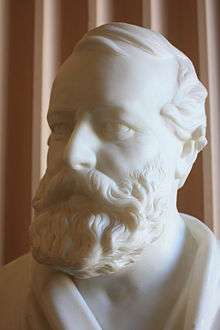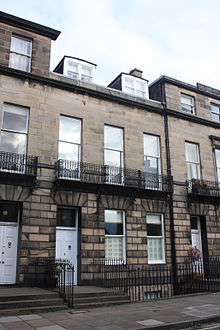Thomas Laycock (physiologist)


Prof Thomas Laycock FRSE FRCPE (1812–1876) was an English physician and neurophysiologist who was a native of Bedale near York. Among medical historians, he is best known for his influence on John Hughlings Jackson and the psychiatrist James Crichton-Browne. Laycock’s interests were the nervous system and psychology.
Life
Laycock was born in Wetherby in Lancashire,[1] the son of a Wesleyan minister.
He trained as an apprentice surgeon-apothecary in Bedale, followed by medical studies at the University College London. He continued his education in Paris, where his instructors included Alfred Armand Velpeau (1795–1867) and Pierre Charles Alexandre Louis (1787–1872), renowned as an initiator of statistics. In 1839 he received his medical doctorate from the University of Göttingen. Afterwards he returned to York as a lecturer at York Medical School as well as a physician to the York Dispensary; from 1855 until his death in 1876, he held the Chair of Medicine in Edinburgh University. [2]
In 1852, Laycock first encountered Hughlings Jackson, a new student; he also taught Jonathan Hutchinson whom Jackson was to meet in 1859 and share a house with at 14 Finsbury Circus, London for three years. In Edinburgh, Laycock was friendly with the asylum reformer William A.F. Browne (1805-1885) and was a major influence on his son, the psychiatrist James Crichton-Browne (1840-1938).
Laycock is known for a concept involving "reflex action of the brain", postulating that the reflex was an intelligent, but unconscious reaction to stimuli. He asserted that although the brain was an organ of consciousness, it was still subject to the laws of reflex action, and in this regard was no different from other ganglia of the nervous system. [2] He also held a fundamental belief in the "unity of nature", and saw nature as working through an unconsciously acting principle of organization.
He was elected a Fellow of the Royal Society of Edinburgh in 1856, his proposer being John Hutton Balfour.
His wife Ann died in 1869 and is buried in York.
Laycock died at home, 13 Walker Street, in Edinburgh's fasionable west end.[3]
He is buried a short distance from his home, in one of the upper terraces of St Johns Episcopal Church at the west end of Princes Street.
Notes
References
 Seccombe, Thomas (1892). "Laycock, Thomas". In Lee, Sidney. Dictionary of National Biography. 32. London: Smith, Elder & Co.
Seccombe, Thomas (1892). "Laycock, Thomas". In Lee, Sidney. Dictionary of National Biography. 32. London: Smith, Elder & Co. - Andrew Hodgkiss (1 January 2000). From Lesion to Metaphor: Chronic Pain in British, French and German Medical Writings, 1800-1914. Rodopi. pp. 91–. ISBN 90-420-0821-0.
- JMS Pearce (2002) Thomas Laycock (1812–1876). J Neurol Neurosurg Psychiatry 73:303.
- British Medical Journal (30 September 1876) Obituary.
- James, Frederick Ernest (1998). "The Life and Work of Thomas Laycock 1812-1876". London.